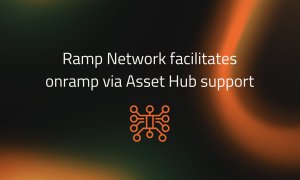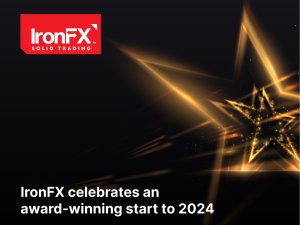Stablecoins Are Gaining the Interest of Multinational Corporations; Can they Define the Future of Finance?
Cryptocurrencies have burgeoned into a trillion-dollar market over the past decade. Today, this ecosystem hosts over 12,000 crypto assets, featuring the likes of Bitcoin, Ethereum and Stablecoins such as Tether (USDT) and Circle’s USDC coin. While all these crypto asset classes have a distinguished value proposition, stablecoins have become popular in recent years given their ability to hedge against volatile market conditions.

Unlike Bitcoin or Ethereum, stablecoins are pegged to an underlying asset that is less volatile (mostly fiat currencies such as the U.S dollar). They can also be backed by a basket of assets which was the case in Facebook’s Libra proposal. That said, there has been an increasing interest by corporations to launch their own stablecoins. International payments giant PayPal is the latest to join the stablecoin bandwagon, according to a recent report by Bloomberg.
The discovery was made by a developer called Steve Moser, who noticed references to ‘PayPal Coin’ on the PayPal iOS application. PayPal’s senior vice president of crypto Jose Fernandez da Ponte has since confirmed to Bloomberg that they are exploring the possibilities of debuting a stablecoin,
“We are exploring a stablecoin, if and when we seek to move forward, we will, of course, work closely with relevant regulators.”
A Pillar of the Future Economy
So, why are stablecoins becoming the favourite digital asset class for corporations? For starters, they act as the on-ramp to digital markets, enabling participants to convert their funds from fiat and purchase their preferred crypto assets. In addition, stablecoins have proven their potential in facilitating global payments, not to mention internal liquidity use cases such as the JP Morgan coin.
While USDT and USDC (fiat-backed) stablecoins still dominate the market, decentralized stablecoin ecosystems are gradually challenging their market share. The next section of this article features three stablecoin ecosystems that are changing the DeFi landscape on Cardano, Solana and Bitcoin blockchains, respectively.
1. Ardana
Ardana is an on-chain asset-backed stablecoin protocol built on the Cardano blockchain. The project chose this blockchain ecosystem given its scalability based on the Proof-of-Stake (PoS) consensus. At the core, Ardana features an over-collateralized asset-backed stablecoin dubbed Ardana Dollar (dUSD).
With Ardana, users on the Cardano blockchain don’t have to convert their native assets into fiat to purchase other crypto assets; instead, they can place the ADA into Ardana vaults and receive a proportion of the collateral as freshly minted stablecoins (dUSD). Once they repay the loans, their ADA tokens are released from the vault back to their wallets.
Besides the decentralized stablecoin, Ardana offers DeFi users on Cardano a DEX stable-asset liquidity pool. This DEX enables a highly capital-efficient trading environment, allowing users to swap stablecoins for other assets while minimizing the risk through liquidity fee incentives. Given the interest in Cardano’s DeFi ecosystem, Ardana is also attracting prominent investors. The project raised $10 million in its latest strategic funding round.
2. Hubble
Hubble is a Solana-native project designed to enhance the liquidity within this Layer-1 chain. The project is being rolled out in three phases, with the first one being its stablecoin USDH. Unlike most decentralized stablecoin projects, Hubble incentivizes USDH minting and borrowing. The platform offers users an opportunity to earn a passive yield from their locked collaterals.
Even better, Hubble’s protocol allows users to collateralize several crypto assets, including BTC, ETH and SOL. In return, they can borrow up to 90.9% of the loan-to-value (LTV) ratio of their collateralized assets. The stablecoin borrows on Hubble are guaranteed by a USDH stability pool that rewards liquidity providers with the platform’s governance token HBB.
As for the stablecoin loan costs, Hubble charges a one-time 0.5% minting fee. These fees are distributed to the Hubble community in the form of HBB native tokens, enhancing the platform’s decentralized governance approach. Though still in the early stages, Hubble is set to introduce more DeFi-structured products and undercollateralized stablecoins in the upcoming phases.
3. RSK
The RSK infrastructure is a smart contract ecosystem secured by the Bitcoin network. This decentralized architecture leverages Bitcoin’s security to introduce a DeFi ecosystem, featuring stablecoins. So far, the RSK platform has a total value locked (TVL) of $133 million, hosting notable stablecoin projects such as MoneyOnChain (MOC), rDAI, xUSD, RIF on Chain and rBRZ.
With RSK in the picture, Bitcoin die-hards can access the opportunities in DeFi without switching to other blockchain ecosystems. Basically, BTC holders can borrow, lend, trade or earn interest on their holdings. The platform also features enterprise functionality, allowing businesses to access the benefits of blockchain technology while maintaining a secure and immutable network.
As open finance (OpFi) continues to grow, RSK is one of the platforms that will level up the playing field. More Bitcoin holders are pivoting to this smart contract ecosystem, with the amount of BTC pegged on rootstock increasing from 546 to 2,520 throughout 2021.
Conclusion
Thanks to emerging technologies, the financial market has undergone massive changes within the past two decades. Stablecoins, an emerging pillar of the crypto market, will set the stage for more innovations and paradigm shifts. According to the Block data, the total stablecoin supply is currently over $173 billion, a significant increase from $6 billion two years ago.
Should the supply growth curve follow a similar pattern, this crypto asset class will likely dominate both traditional and nascent markets in the near future. It is no surprise that corporations and government agencies are quickly falling in line.









